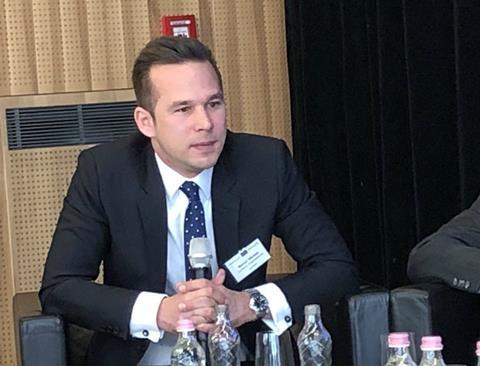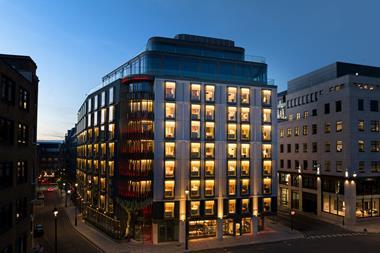All the stars seem to be aligned so that 2018 could be a record year for the real estate investment market in Hungary, experts agreed at the Outlook 2018: Europe & CEE Investment Briefing, which was held in Budapest last week.

‘This year has started off on a strong footing and transactions are likely to reach the €500 mln mark in Q1,’ said Bence Vécsey, director, head of investment services, Colliers International, Hungary. ‘The domestic share of investments, currently at 35/40%, might drop because there are so many new entrants from the US, UK, Germany, Austria and elsewhere wanting to deploy capital in Hungary.’
Last year investment volumes increased by 15% to €1.82 bn, according to Colliers International research.
The composition of the investor community is definitely changing, said Jake Lodge, managing partner, Lodge & Partners: ‘Competition for assets between local and foreign players is a positive, because it increases liquidity in the market.’
Shunned by institutional investors only a few years ago, Hungary has seen a remarkable turn-around in its fortunes. ‘It was the hardest-hit in the region by political risk, but a large inflow of domestic funds created momentum for international capital to come back,’ said Vécsey. ‘Now I am not at all worried about the medium-term outlook.’
The country has a lot going for it, said George Leslie, head of investment management, HB Reavis: ‘It is well-positioned in the region, it is an investment grade market, it has a good story and it offers many opportunities.’
P3 Logistic Parks, that has long had a strong presence in the CEE region, is now ready to exploit the opportunities the market offers, said Ian Worboys, CEO: ‘We hope to enter Hungary before the end of the year. Logistics still offers the best returns and there is not enough supply.’
The logistics market has been booming across the region and Hungary is no exception. ‘Investing in logistics around Budapest is an absolute no-brainer,’ said Vécsey.
Hungary’s success is most obvious in the capital. The Budapest office market is booming, with low vacancy rates, high demand and a shortage of product. Rents have been rising at a 9% rate for the past two years.
‘The vacancy rate in prime offices is currently 4.8%, but we expect it to reduce further in Q1 2018, as there is a lot of demand and a lack of stock,’ said Lodge. ‘There is a strong pipeline, but the market has the capacity to absorb a lot and much of what is coming on stream is already leased.’
Demand is such that opportunistic investors should consider office development in the capital, said Arpád Torok, CEO, TriGranit Corporation: ‘It is a good investment and, at current financing levels, these assets will provide steady cashflow.’
If liquidity is your main concern, then you can do no better than dominant retail in Budapest, said Lodge: ‘It is the most liquid asset I can think of, as there is scarcity of product and you can roll out asset management initiatives.’
With 10% wage growth in Hungary and CPI inflation at 2.1%, people have more money in their pockets and are happy to spend it.
Retail is a strong sector throughout the country, said Torok, because e-commerce and the omnichannel trend have not taken root in Hungary yet. ‘There is a transformation underway, but the experience is still very different from that of other countries. Regional shopping centres still have a big role to play as places of entertainment and meeting points for people.’
Student housing is another sector where Hungary has yet to play catch-up: there is only one student home in operation at the moment, but experts agreed the demand is definitely there. ‘We hope to launch several development projects in student housing and micro-living in the next few months,’ said Torok. ‘Demand will be such that in 3 to 5 years’ time institutional capital will come looking for opportunities in this sector.’









